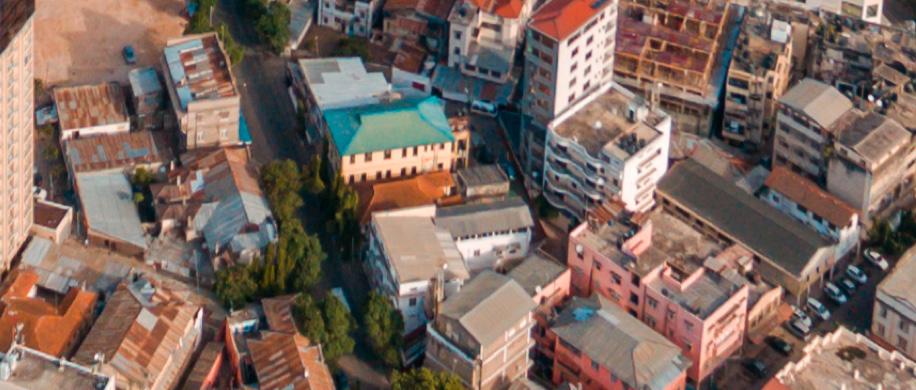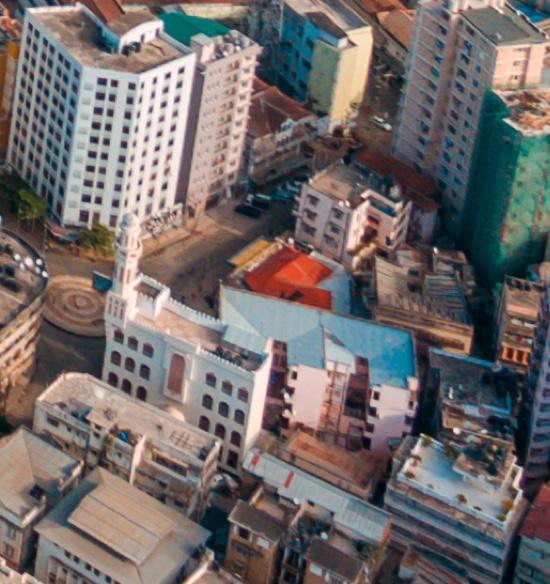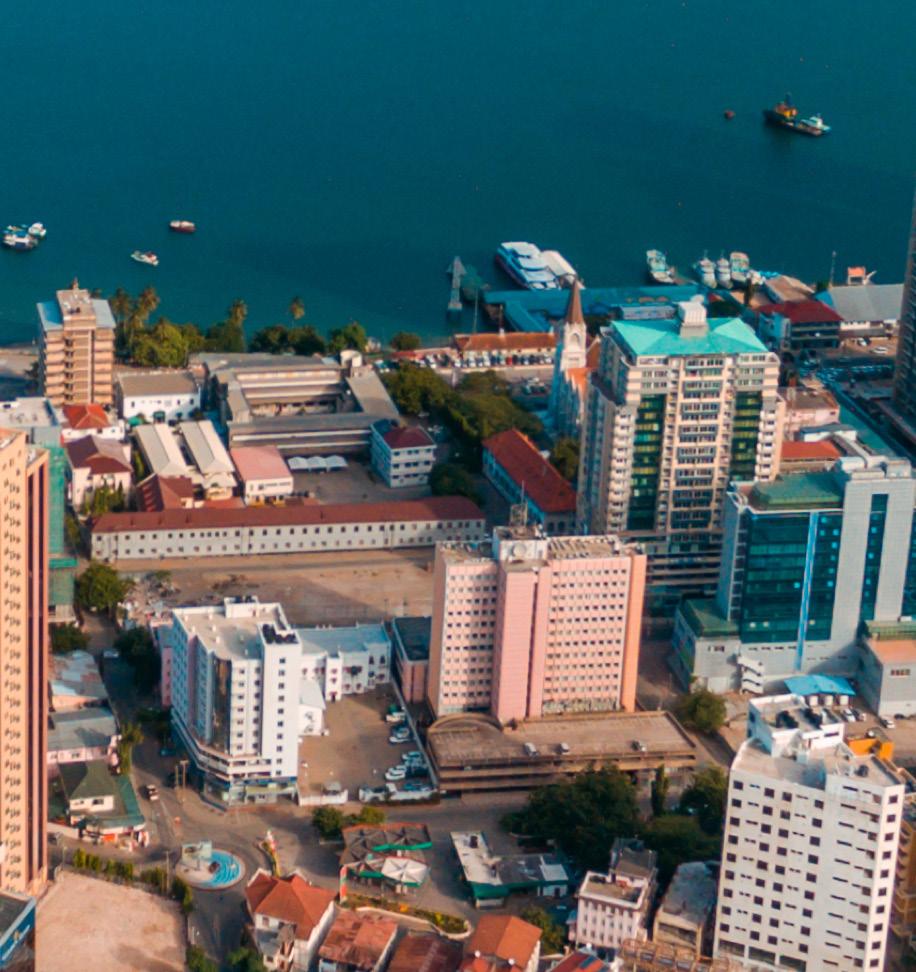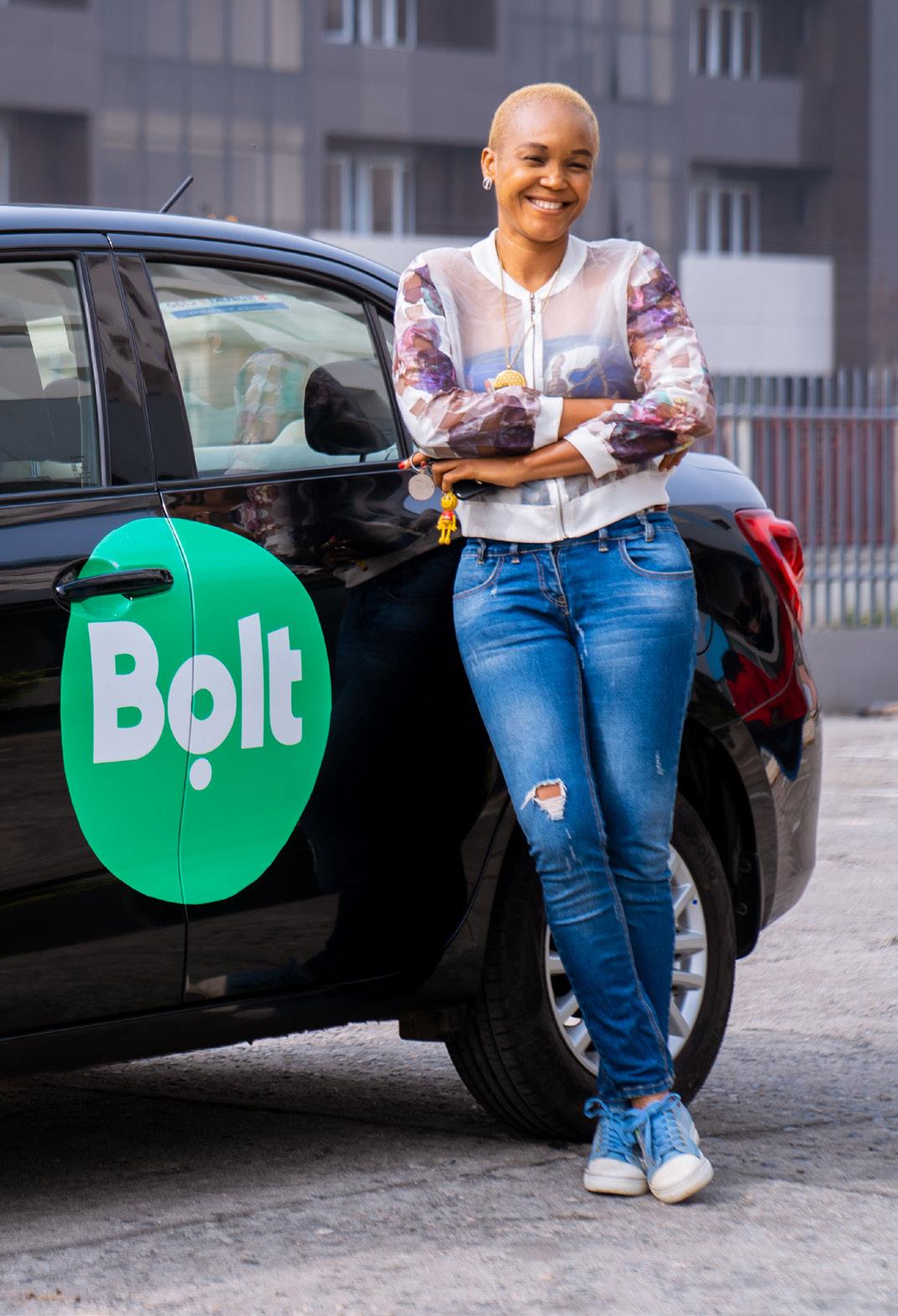
3 minute read
RIDING FORWARD TO A GREEN FUTURE IN AFRICA


Advertisement


Now established in cities across Africa in nations such as Ghana, Kenya, Nigeria, South Africa, Tanzania, Tunisia and Uganda, Bolt is proving that the phenomenon of ride-hailing is far from being a flash in the pan. Regional Manager for East and Southern Africa at Bolt, Takura Malaba, argues that ride-hailing has come a long way. Its humble beginnings rooted in a curious and innovative option to get around, now e-hailing has evolved into a safe and convenient transport alternative for many. He says that as more people look for reliability without the fuss, Bolt is a popular choice, empowering both passengers and drivers.

WWhen e-hailing first launched, passengers were intrigued by the innovation. However, there are still many who were sceptical about driving with a stranger. And being unsure about the processes involved is also a communication challenge. These and many other hurdles need to be overcome for Bolt to be a fully-fledged complementary service in the transport ecosystem.
By studying macro-trends like rising inflation and a much higher cost of living, we can get a feel for what the future may hold. For instance, more people –especially the young generation – are moving away from buying vehicles and don’t necessarily want to own a car. They do however still need to get from A to B, safely and affordably. We believe that many will start using riding opportunities with e-hailing platforms instead of owning their own vehicles.
DRIVERS ARE AN EQUALLY IMPORTANT PART OF E-HAILING
At Bolt, the driver is an equally important part of the transport solution. It started with people seeing e-hailing as an opportunity to make additional income by driving, and now that’s changed. Today, countless businesses have grown out of it and there are many entrepreneurs who have turned one e-hailing car into a large fleet. Bolt has car owners who have decided to leave their current employment, whether they were truck operators or taxi drivers, simply because they prefer to work in a flexible environment with the potential to earn more and decide their own hours.
Riding With The Times
Ten years ago, when Bolt first entered South Africa, we didn’t think we could move the needle on unemployment. But now we’re at a point where we have between
100 000 and 150 000 e-hailers on our roads. If South Africa can emulate mature markets where 1% of the employed population are e-hailing drivers, we’re looking at 500 000 to 600 000 people with gainful employment in the next couple of years, which is a significant number.
Focusing On The Product

E-hailing started with the bare minimum and was all about getting from one point to another. At the time, the team at Bolt probably thought the tech was quite sophisticated, but now we’re lightyears ahead of where we were. Safety is a cornerstone in our business, and there have been plenty of innovations in South Africa in that area. For example, we take full advantage of AI with driver-selfie verification, which combats people renting out their profiles to be impersonated by others. Using machine learning, these selfies go into government databases to be compared with the pictures found in documentation like ID photos. This means our drivers are vetted and all sign on to be safety ambassadors for our brand.

CREATING EMPLOYMENT, ONE DRIVER AT A TIME
E-hailing provides drivers with great earning potential while also offering rural and township residents access to job opportunities in cities, a gap the traditional public transport simply isn’t able to fill.


E-hailing is one of the pillars to solve or at least alleviate the transport challenges we face. If you look at South African transportation as an ecosystem, we’re simply plugging into it. It’s not here to replace other public transport, but rather to provide value in the form of reliability and safety and to ensure that the price point is relevant for the consumers in our market.
Looking To Africa
which converts to a 15-20% saving in both emissions and efficiency. And this is only the first step.
It’s been an incredible journey so far with many exciting innovations. We are no longer a lifestyle convenience for a niche group of affluent people but now we are an important transportation option for many. We’ve only caught a glimpse of our potential to shape cities and empower people, and our eyes are set on the road ahead.
Bolt is the European super-app, with over 100-million customers in more than purpose a private car serves – including






45 countries across the globe. We’re making cities for people, offering better alternatives for every ride-hailing, shared cars, scooters, and food and grocery delivery.
We believe that most trips in the city don’t require the use of a personal car. At Bolt, we’re building a future in which people are no longer forced to buy a car to get around. Where people have the freedom to use transportation on demand, choosing whatever vehicle is best for each occasion.

Depending on maturity, our markets have electric vehicle market is different, but we have our sights set on a green future.
One of our agendas at Bolt is to go green and initiate sustainability programmes. Depending on maturity, our markets have electric vehicle categories and we’re looking to introduce that to Africa. Each market is different, but we have our sights set on a green future.
One area we are looking at is liquid petroleum gas kits for drivers to add to their vehicles. In essence, this allows them to run liquid petroleum alongside traditional petroleum gas,











